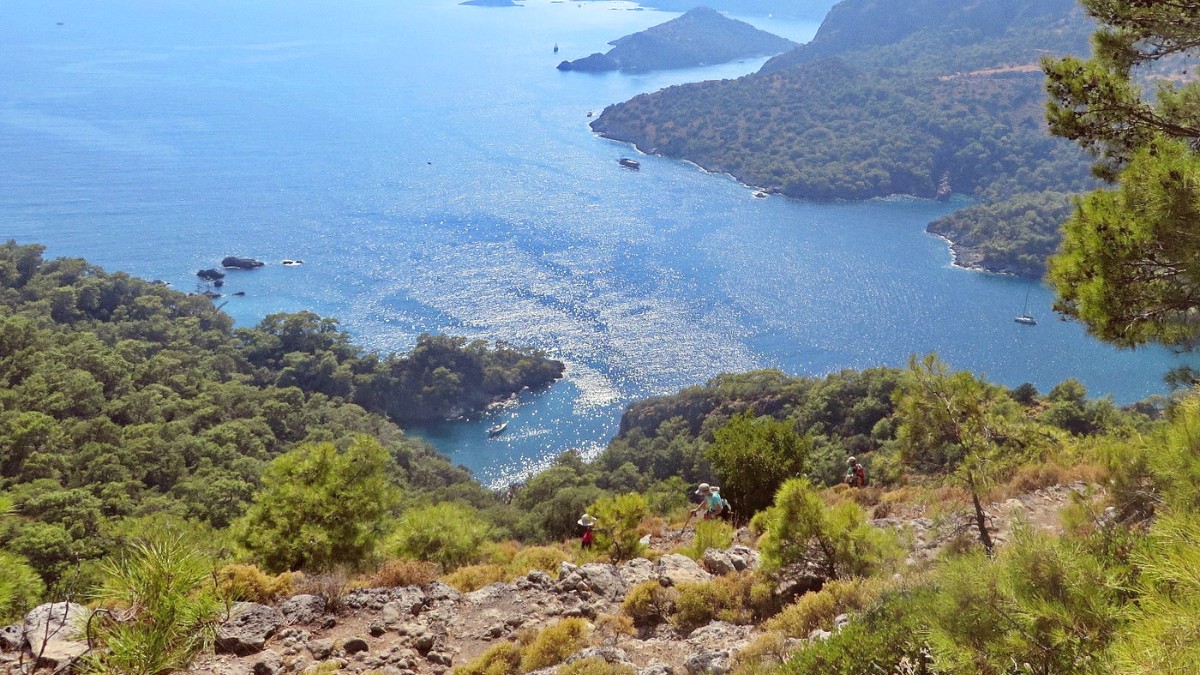
Mediterranean Coast, Turkey
Visitors discover a natural playground for outdoor pursuits and a deep connection to centuries of human endeavor. The town and its surroundings hold diverse experiences, from lazy beach days to challenging hikes along ancient trails. Every corner presents another reason why this part of the Turkish Mediterranean Coast remains a favored spot for travelers worldwide.
Fethiye balances modern amenities and tourist services with traditional roots. The town center buzzes with local activity, from fishermen tending their nets to shopkeepers engaging in friendly banter. Just a short journey away, pristine natural landscapes welcome exploration, from the famous Blue Lagoon's calm waters to the dramatic depths of Saklıkent Gorge.
The air often carries the scent of pine from the surrounding hills, mingling with the fresh sea breeze. Evenings present a different kind of magic, with waterfront restaurants illuminated, offering fresh seafood and views of the harbor. The hospitality of the local people adds another layer to the experience, making visitors feel welcome and comfortable.
Fethiye is positioned on Turkey’s southwestern coast, within the Muğla Province. It rests at the head of a picturesque bay, forming a natural harbor dotted with islands and coves. The town is cradled by the Taurus Mountains, which descend gently towards the Mediterranean Sea, fabricating a dramatic landscape of pine-clad hills, olive groves, and citrus orchards. This geographical setup frames Fethiye's renowned Mediterranean climate, characterized by long, hot, dry summers and mild, wet winters.
The mountains directly behind Fethiye define the area, influencing climate and activity range. These mountains guard the bay from harsh northern winds, contributing to the generally calm waters of the harbor. They create the launchpad for paragliding from Babadağ Mountain, which stands prominently overlooking Ölüdeniz. The region’s geology presents limestone formations, contributing to the stunning blue hues of the water in places like the Blue Lagoon due to suspended mineral particles.
Natural harbor with numerous islands and coves like Şövalye Island.
Pine-clad slopes descending to the sea, offering dramatic scenery and paragliding sites.
Mix of pebble beaches and secluded rocky coves, many boat-accessible only.
Stunning turquoise waters from suspended mineral particles.
Deep canyon carved by mountain rivers, offering adventure.
The proximity to the Aegean Sea to the west and the broader Mediterranean to the south influences Fethiye’s maritime character. Its location made it a historical trading port, and today it remains a busy harbor for yachts and gulets (traditional wooden sailing boats). This intricate coastline, with its countless inlets and bays, makes boat trips a notably rewarding way to explore the region, unveiling hidden beaches and ancient ruins accessible only by sea.
The numerous islands within the bay, like Şövalye Island, add to the visual appeal and create sheltered waters for boating. This rich geographical diversity is a significant draw for visitors, presenting a dynamic and varied landscape to discover.
Fertile valleys inland support agriculture, producing olives, citrus fruits, and pomegranates, which contribute to the freshness of local cuisine. The geological activity of Turkey means that thermal springs are present in some nearby areas, adding another dimension to the region’s natural offerings.
This blend of natural beauty, cultural depth, and genuine warmth makes Fethiye a destination that leaves a lasting impression on all who visit.
Fethiye stands on the site of the ancient city of Telmessos, a prominent city of the Lycian Federation. The history of Telmessos stretches back to at least the 5th century BC, though archaeological evidence suggests human settlement much earlier. The Lycians developed a distinct culture, language, and architectural style, characterized by their unique rock-cut tombs carved into cliff faces.
These monumental tombs, notably the Tomb of Amyntas, are a testament to Telmessos's wealth and importance in the ancient world. The city flourished due to its strategic harbor and fertile hinterland, becoming a significant trade center. Its inhabitants were known for their independent spirit, often resisting larger empires.
Telmessos, a prominent Lycian Federation city. Distinct rock-cut tombs visible today.
Influenced by Alexander the Great, then Roman Empire. Construction of theatre and infrastructure.
Renamed Makri in Byzantine era. Later became part of the Ottoman Empire.
The 20th century brought significant changes. The Greco-Turkish War (1919-1922) and the subsequent population exchange of 1923, which saw the forced migration of Orthodox Christians from Turkey to Greece and Muslims from Greece to Turkey, profoundly impacted the region. The nearby village of Kayaköy, once a thriving Greek settlement, became a ghost town, a poignant reminder of this historical event. Makri was officially renamed Fethiye in 1934, in honor of Fethi Bey, an early Turkish aviator.
Adrenaline seekers flock to Ölüdeniz for tandem paragliding from Babadağ Mountain, a world-class spot. Hikers find paradise on sections of the Lycian Way.
Boat trips to secluded bays, diving in clear Mediterranean waters, or various water sports at Çalış Beach.
Ancient Lycian rock tombs, the ghost village of Kayaköy, and the ruins of Tlos, Xanthos, and Letoon provide fascinating insights into past civilizations.
Spend days relaxing on beautiful beaches or by the pool, soaking in the Mediterranean sun and serene coastal ambiance.
Fill your days with diverse activities, from boat tours to historical site visits, or hiking ancient trails.
Immerse yourself in local culture through markets and eateries, experiencing the genuine warmth of Fethiye's residents.